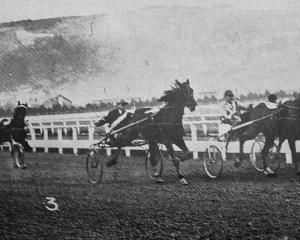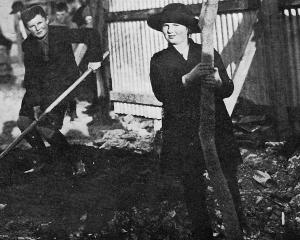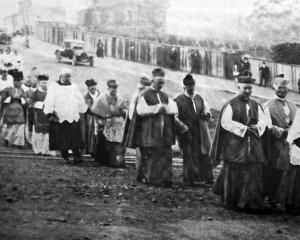
30.5.1922.
It is hoped that the Government may be induced to undertake a scheme for the irrigation of the Cromwell flats by water drawn from the Roaring Meg. The suggestion is that water from this source should be taken at a point 2000 feet above the bridge at the Kawarau Gorge and then carried by gravitation over the Meg Hill to the flats.
Among the properties that would participate in the benefits of the Roaring Meg scheme is that portion of the Ripponvale orchard land which is not yet irrigated. Twenty-eight sections in this property have now been sold, and there are eighteen resident settlers, some of whom are already meeting with a gratifying measure of success. The area of the sections varies from 14 to 20 acres, and in each of them 10 acres have been planted with apple trees. Altogether, about 40,000 fruit trees have been planted on Ripponvale. As a practical apple-grower reckons the product of each tree as not less than 25 shillings per annum, the value of the industry represented by the Ripponvale orchards may be readily assessed. An extension of the orchards is contemplated as soon as the irrigation of the whole property is practicable. In the meantime, however, the industry has been well-established and a successful future seems to be assured for it.
Hawea Flat dairying proposed
The establishment of a dairying industry in the Hawea Flat district is a development that is to be anticipated in the future if a supply of water for irrigation purposes can be secured. The district is at the present time famous for its production of barley and wheat. The cost of transport to the railroad is, however, so heavy as to place a severe handicap upon the prosecution of the industry, for which the Flat is by climate and soil particularly adapted. It costs up to 2 shillings 1 pence per bushel to convey the produce to Dunedin, and the margin of profit which is left to the grower is so inconsiderable that he is being attracted by the possibilities of dairying. While, however, unirrigated land in Hawea Flat will grow barley and wheat, it will not grow grass, and it is essential therefore that the district should be assured of a supply of water before the settlers can embark on the fresh industry.
Nursery closure questioned
The decision of the Government to close the State Nursery at Ranfurly cannot be viewed with satisfaction by those who are specially concerned about the future of Central Otago.
There can now be no reasonable doubt that Central Otago is destined for a great future, and the limits of its possibilities are bounded only by the measure of the enterprise of those who have the proper vision. The Ranfurly nursery, which was opened by Mr H.J. Matthews, is over 20 years old, and the original grounds for its establishment have been augmented by the development of the district. The intention of its promoters was to use the nursery as a feeder for timber on Government lands by which settlers were supplied with trees for planting shelterbelts, makes the retention of the nursery still more necessary.
In view of the well merited attention which the Government is now giving to the question of a forest station, combined with its general policy of encouragement to tree planting, its decision to close down the Ranfurly nursery is as incomprehensible as it is short-sighted.
— ODT, 24.5.1922












